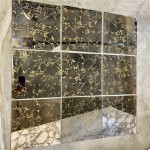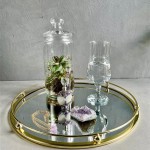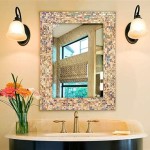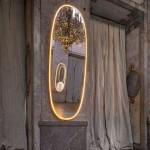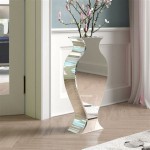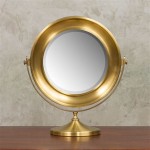How To Make A Large Frame For A Mirror
Creating a large frame for a mirror can significantly enhance its visual impact and complement the surrounding decor. While purchasing a ready-made frame is an option, building one allows for customization and a personalized touch. This article provides a comprehensive guide to constructing a large mirror frame, outlining the necessary materials, tools, and step-by-step instructions.
Planning and Preparation
Careful planning is crucial for a successful project. Begin by accurately measuring the mirror's dimensions to determine the frame's size. Consider the desired frame width and depth, ensuring it complements the mirror's size and the room's aesthetics. Sketching a design on paper can help visualize the final product and identify potential challenges.
Choosing the appropriate wood is essential for structural integrity and aesthetics. Hardwoods like oak or maple offer durability and a classic look, while softer woods like pine are easier to work with but may require more reinforcement. The wood should be straight and free of knots or imperfections. Calculate the required lumber based on the frame's dimensions and purchase extra material to account for cuts and potential errors.
Gathering Materials and Tools
Assembling the necessary materials and tools beforehand streamlines the building process. Aside from the chosen wood, essential materials include wood glue, wood screws, finishing nails, wood filler, and the desired finish (paint, stain, or varnish).
Required tools include a measuring tape, miter saw, circular saw or table saw (for ripping lumber), drill, screwdriver, clamps, safety glasses, and a sanding block or power sander.
Cutting the Frame Pieces
Accurate cutting is paramount for a well-fitting frame. Using the miter saw, cut the four frame pieces at a 45-degree angle. Ensure the opposing pieces are of equal length to create a perfect rectangle or square. Double-check measurements before making each cut to avoid costly mistakes. The mitered ends should fit tightly together, forming a 90-degree corner when joined.
Assembling the Frame
Apply wood glue to the mitered ends of two adjoining pieces. Clamp the pieces together firmly, ensuring the corners are aligned. Pre-drill pilot holes to prevent the wood from splitting and then secure the joint with wood screws. Repeat this process for the remaining corners. Allow the glue to dry completely according to the manufacturer's instructions.
Reinforcing the Frame (Optional)
For larger mirrors, reinforcing the frame adds stability and prevents warping. This can be achieved by adding corner braces or by attaching a backing board to the frame. Corner braces can be made from scrap wood or metal and are attached to the inside corners of the frame with screws. A backing board, cut to the frame's dimensions, provides additional support and a surface for attaching the mirror.
Finishing the Frame
Once the frame is assembled and dry, fill any screw holes or gaps with wood filler. After the filler dries, sand the entire frame smooth, starting with a coarser grit sandpaper and progressing to a finer grit for a smooth finish. Apply the chosen finish, whether paint, stain, or varnish, according to the manufacturer's instructions. Multiple coats may be necessary for optimal coverage and durability.
Attaching the Mirror to the Frame
Methods for attaching the mirror vary depending on the frame's design and the mirror's weight. For heavier mirrors, using mirror clips and adhesive is recommended. Mirror clips are attached to the inside of the frame and hold the mirror securely in place. For lighter mirrors, adhesive alone may suffice. Ensure the mirror is centered within the frame and apply the adhesive evenly to the back of the frame or the backing board. Carefully place the mirror onto the adhesive and allow it to dry completely before handling.
Hanging the Framed Mirror
The final step is to install appropriate hanging hardware on the back of the frame. The type of hardware depends on the weight of the framed mirror and the wall material. D-rings and wire are a common choice for lighter mirrors, while heavier mirrors may require more robust hardware, such as French cleats. Ensure the hardware is securely attached and can support the weight of the mirror. Follow the hardware manufacturer's instructions for proper installation and weight limits.
Diy Modern Mirror Re Frame What Not To Do Kayla Simone Home
Diy Modern Mirror Re Frame What Not To Do Kayla Simone Home
Frame Large Mirror Diy Project

Antique Diy Mirror Frame Arinsolangeathome

How To Make A Large Floor Mirror Frame Diy Wood

How To Add A Wood Frame Large Wall Mirror For Under 20 Dream Design Diy

Framing A Large Bathroom Mirror Diy Tutorial How To Add Frame Remodelaho Mirrors Simple

Diy Rustic Mirror Houseful Of Handmade

Diy Wood Mirror Frame For Bathroom Vanity Tidbits

How To Add A Wood Frame Large Wall Mirror For Under 20 Dream Design Diy


